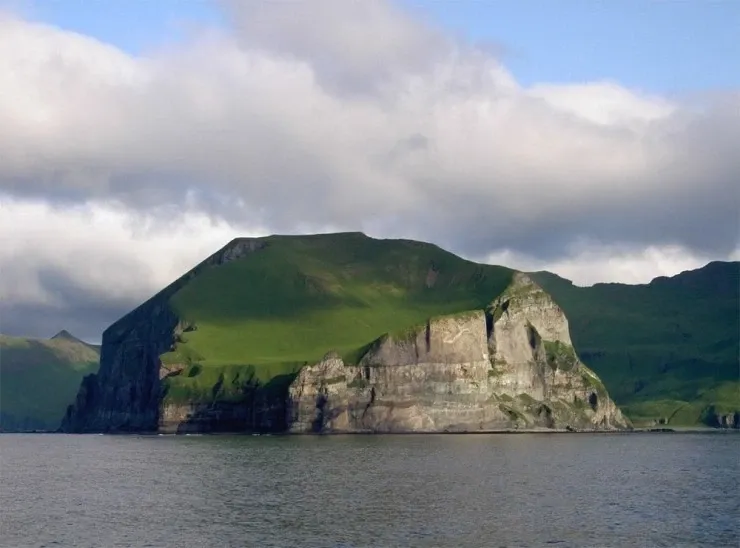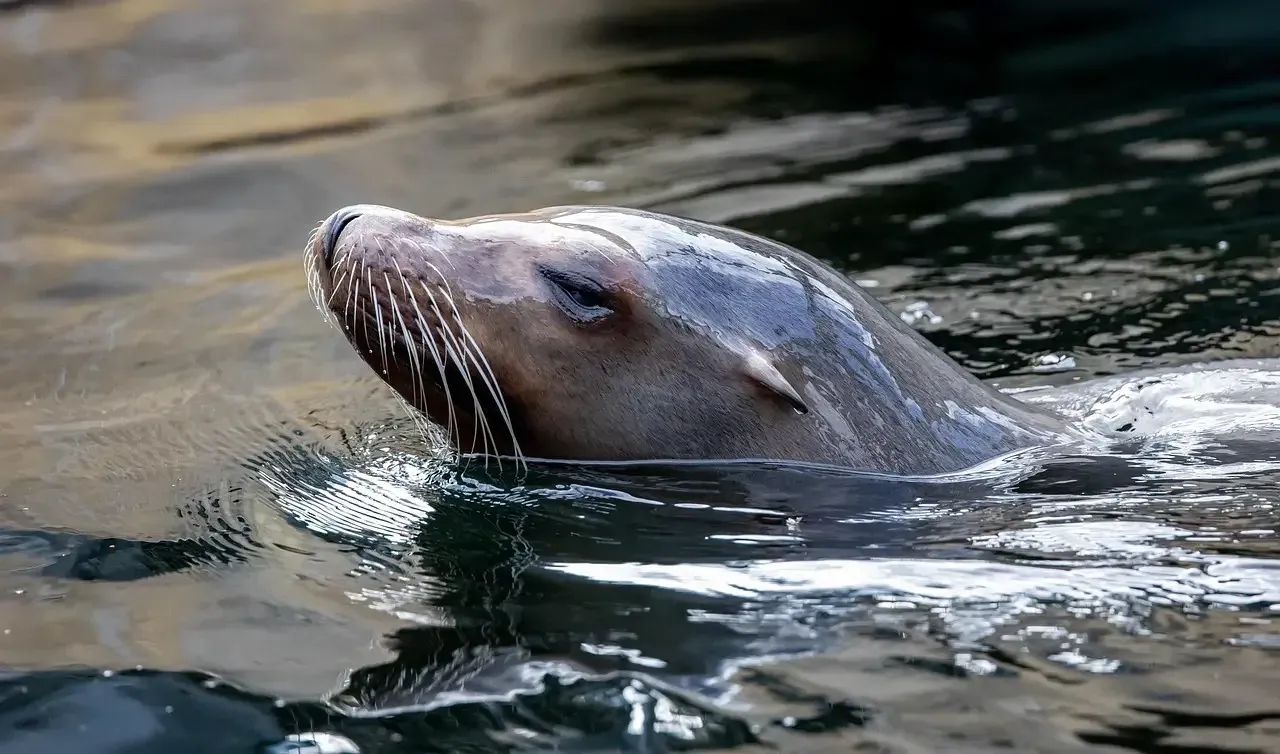Alaska, the land of wonders, is renowned for its majestic glaciers, diverse wildlife, and as a hotspot for some of the most active volcanic areas in the world. Situated on the Pacific Ring of Fire, Alaska is home to numerous active and dormant volcanoes that create a breathtaking landscape, showcasing the Earth’s immense power. Join Travel Around the World to explore Alaska’s volcanic hotspots, where you can witness unique beauty and extraordinary experiences.
Overview of Volcanoes in Alaska
Alaska ranks as one of the most volcanically active regions globally, with over 130 identified volcanoes and volcanic fields, of which about 40 are active. Most of these volcanoes are concentrated along the Aleutian Arc, stretching from the Alaska Peninsula westward to the Aleutian Islands, forming part of the Pacific Ring of Fire. This Ring of Fire is the most seismically and volcanically active zone worldwide, where tectonic plates collide and shift, creating immense pressure and temperatures that lead to volcanic eruptions and earthquakes.
Volcano formation in Alaska is closely linked to the subduction of the Pacific Plate beneath the North American Plate. As the Pacific Plate sinks into the Earth’s mantle, it carries water and other volatiles, lowering the melting point of the overlying mantle rocks and creating magma. This magma then rises to the surface, erupting and forming volcanoes.
Volcanic activity in Alaska is not merely a natural geological phenomenon but plays a crucial role in shaping the region’s landscape, ecosystems, and even its culture. Volcanic ash from past eruptions has created fertile soils, supporting lush vegetation. Additionally, hot springs and geysers resulting from volcanic activity serve as valuable natural resources and tourist attractions.
Aleutian Islands – Alaska’s Volcanic Hotspot
The Aleutian Islands, a chain of islands extending over 1,200 miles from southwest Alaska, are called Alaska’s volcanic “hotspot.” With over 70 identified volcanoes, about 27 still active, the Aleutian Islands have the highest concentration of volcanic activity in North America. This region is not only a geological marvel but also a unique tourist destination, attracting adventurers and those passionate about exploring wild nature.

The unique volcanic landscape of the Aleutian Islands.
Formed by the robust tectonic activity at the Pacific Ring of Fire, the Aleutian chain was created through continuous volcanic eruptions under the sea, which over millions of years emerged above the water as unique volcanic islands. The terrain of the Aleutian Islands is predominantly rugged, featuring towering volcanoes, deep valleys, and rocky coastlines.
The climate in the Aleutian Islands is quite harsh, with strong winds, dense fog, and frequent rainfall. However, these climatic conditions contribute to the islands’ wild and mysterious beauty. Despite the challenging climate, the Aleutian Islands are home to numerous rare species, especially seabirds and marine mammals.
Notable Volcanoes in the Aleutian Islands
The Aleutian Islands boast many volcanoes famous for their majestic beauty and vibrant geological activity. Here are some notable volcanoes to explore while visiting the Aleutian Islands:
- Shishaldin Volcano: Located on Unimak Island, Shishaldin is the highest volcano in the Aleutian Islands and one of the most symmetrical conical volcanoes globally. At over 9,373 feet, Shishaldin frequently erupts, producing spectacular ash plumes and lava flows. Its symmetrical snow-covered shape makes it a natural icon of the Aleutian Islands.
- Makushin Volcano: Situated on Unalaska Island, Makushin is a large stratovolcano with a vast caldera hosting numerous hot lakes and fumaroles. Makushin is one of Aleutian’s most active volcanoes, with numerous historic eruptions. The area around Makushin is also rich in natural hot springs, attracting visitors seeking relaxation and nature experiences.
- Akutan Volcano: On Akutan Island, Akutan is a complex stratovolcano with a massive caldera formed after a major past eruption. Akutan maintains regular eruption activity, with periodic ash eruptions and small lava flows.
- Cleveland Volcano: Dominating Chuginadak Island, Cleveland Volcano is another perfectly symmetrical cone of the Aleutians. Despite being smaller than Shishaldin, Cleveland is well-known for its frequent and vigorous eruptive activity, often producing towering ash plumes and lava flows.
- Pavlof Volcano: Near the tip of the Alaska Peninsula, Pavlof is one of the most active and frequently erupting volcanoes on the Pacific Ring of Fire. Pavlof has erupted over 40 times since recorded history in the 18th century, producing high ash plumes affecting air traffic in the region.
Travel Tips for Exploring Volcanoes in Alaska (Aleutian Islands)
Exploring volcanic areas in Alaska, particularly the Aleutian Islands, offers a unique and challenging travel experience. To ensure a safe and memorable trip, consider the following tips:
- Choose the Right Time: The summer months (June to August) are ideal for visiting the Aleutian Islands. During this time, the weather is relatively mild, with less rain and fog, making it suitable for sightseeing and exploration.
- Prepare Proper Clothing and Gear: Aleutian weather can be unpredictable, so pack warm, waterproof, and windproof clothing. Hiking boots, gloves, hats, and sunglasses are essential. If you plan to climb volcanoes, bring specialized climbing gear and go with experienced guides.
- Join Guided Tours: For safety and valuable insights into the volcanoes and region, join guided tours offered by reputable travel companies. Local guides will help you discover interesting spots, provide geological, biological, and cultural knowledge, and ensure your safety throughout the journey.
- Stay Informed About Volcanic Activity: Before traveling, check current volcanic activity levels from authorities such as the United States Geological Survey (USGS). Adhere to warnings and safety instructions from local authorities and tour guides.
- Respect Nature and Local Culture: The Aleutian Islands are ecologically valuable and pristine. Respect nature, avoid littering, and do not harm wildlife. Learn about and respect the culture of the native Aleut people, the traditional inhabitants of these islands.

Steller Sea Lions inhabiting the Aleutian Islands.
Conclusion
The volcanic hotspots in Alaska, especially the Aleutian Islands, offer a unique and captivating destination for those who love exploring majestic nature and experiencing adventure. Visiting Alaska provides not only the chance to marvel at the grandeur of its volcanoes but also the opportunity to learn about its geological history, diverse ecosystems, and the distinct local culture. Plan your exploration trip to Alaska today to witness nature’s marvels and feel the Earth’s latent power.